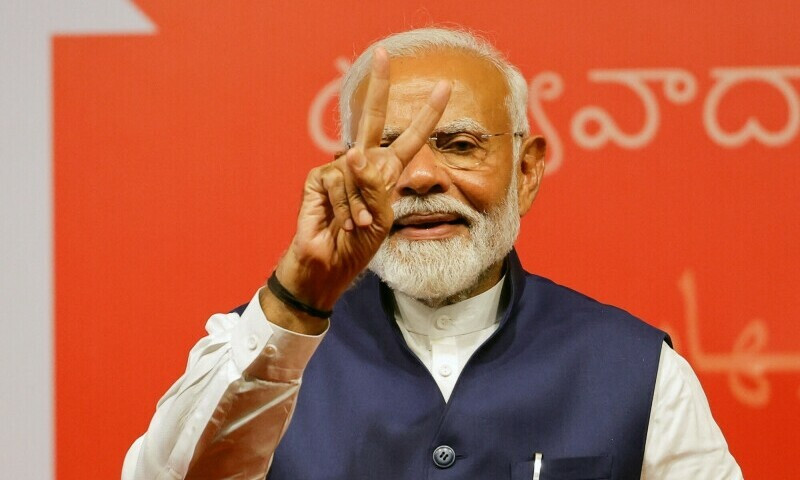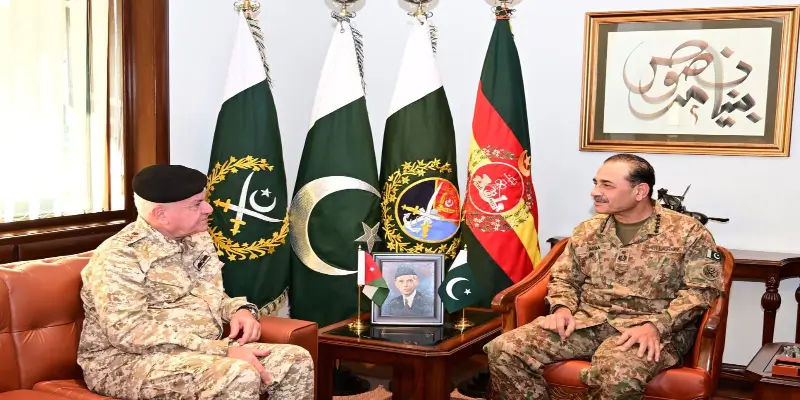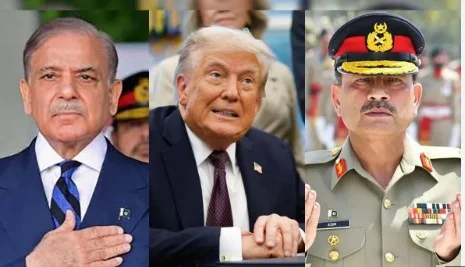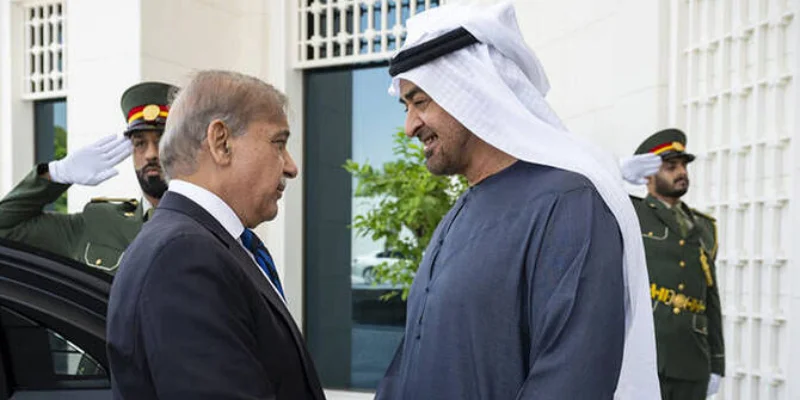ISLAMABAD:
As the clock struck 7:30 PM local time, the Bharatiya Janata Party (BJP) leadership, led by Prime Minister Narendra Modi, emerged from party headquarters, greeted by a throng of jittery supporters eagerly awaiting Modi’s address.
Flanked by party stalwarts Defense Minister Rajnath Singh and Home Minister Amit Shah, when Modi finally came to the stage, his sombre expression spoke volumes. It’s not every day you find a long face in the camp of the victors. While the BJP-led National Democratic Alliance (NDA) secured enough seats to form government at the centre, that wasn’t the evening’s headline.
Read more: India’s Modi set to win historic third term but with surprisingly slim majority
In 2019, the BJP’s electoral juggernaut had secured a staggering 303 seats out of 353 in the Lok Sabha, fuelling Modi’s aspirations for a commanding two-thirds majority in 2024, famously expressed as “Iss bar 400 par”, aiming for a two-thirds majority.
Exit polls predicted a clear edge for the NDA with estimates ranging from 330 to 390 seats. However, they failed to foresee the remarkable resurgence of the BJP’s adversaries.
However, when the actual results rolled in, the NDA fell far short of the 400-seat mark. Despite emerging as the single largest party, the BJP found itself unable to clinch a simple majority, now reliant on its allies to navigate the corridors of power.
The real shocker was the strong comeback by the Congress party and its allies, led by Rahul Gandhi, who did not rule out the possibility of cobbling together a coalition government.
Read also: India election throws up surprise as Modi’s alliance scrapes past majority
With no party having a clear majority, the Janta Dal (JD) and Telugu Desam Party (TDP) have emerged as potential kingmakers. Previously allied with the Congress, they joined hands with the BJP this time. While both the parties have pledged their support to the BJP, the fluid political landscape leaves room for last-minute surprises.
However, JD and TDP both have announced that they are committed to back the BJP.
As the dust settles down after the massive election exercise, questions are being asked about what went wrong with the BJP. In January when Prime Minister Modi inaugurated the Ram Temple built on the ruins of historic Babari Masjid, which was demolished by Hindu zealots in 1992, he set the tone for using the Hindu card in the election campaign.
Ironically, the BJP candidate lost in the temple city of Ayodhya, suggesting that the Hindu card did not play out the way the ruling alliance would have liked. Inflation and joblessness played a major role in the elections. Analysts believe voters have rejected communal politics. The classic manifestation of this was the Ayodhya constituency results.
The BJP failed to retain the 2019 seat position because it suffered a major drubbing in Uttar Pradesh (UP). UP holds the same importance in the Indian elections as Punjab province in Pakistan’s case. With a population of 240 million, UP has 80 Lok Sabha seats, the most in any Indian state. In 2019, BJP swept the State with 64 seats while Congress managed to get only 1 seat. But the 2024 election changed the results upside down.
The Samajwadi Party and Congress won more than half of the seats in the BJP’s powerhouse.
The Modi-Yogi combination backfired. Modi may have won from his traditional constituency Varanasi but the margin of victory which was 500,000 in 2019 now reduced to just 150,000.
What do these election results mean for India and the outside world? Despite a narrow margin of victory, Modi has created history by becoming only the second Indian leader to have become the prime minister for the record third time. The other was Jawaharlal Nehru. But given that BJP could not win enough seats, let alone a two-thirds majority, Modi may require many compromises he is otherwise not accustomed to.
There were fears before elections that if BJP and its allies got a two-thirds majority, Modi could amend the country’s constitution and formally declare India as a Hindu state. But that equation is now out of the window. For the first time, Modi will be facing a formidable opposition.
At the BJP’s headquarters in Delhi, Modi said the number of votes for the party doubled in some areas, including in the capital. But deep down, he knows this is not the kind of victory he was hoping for. India is the world’s largest democracy and its people have shown why democracy is the best form of revenge.







